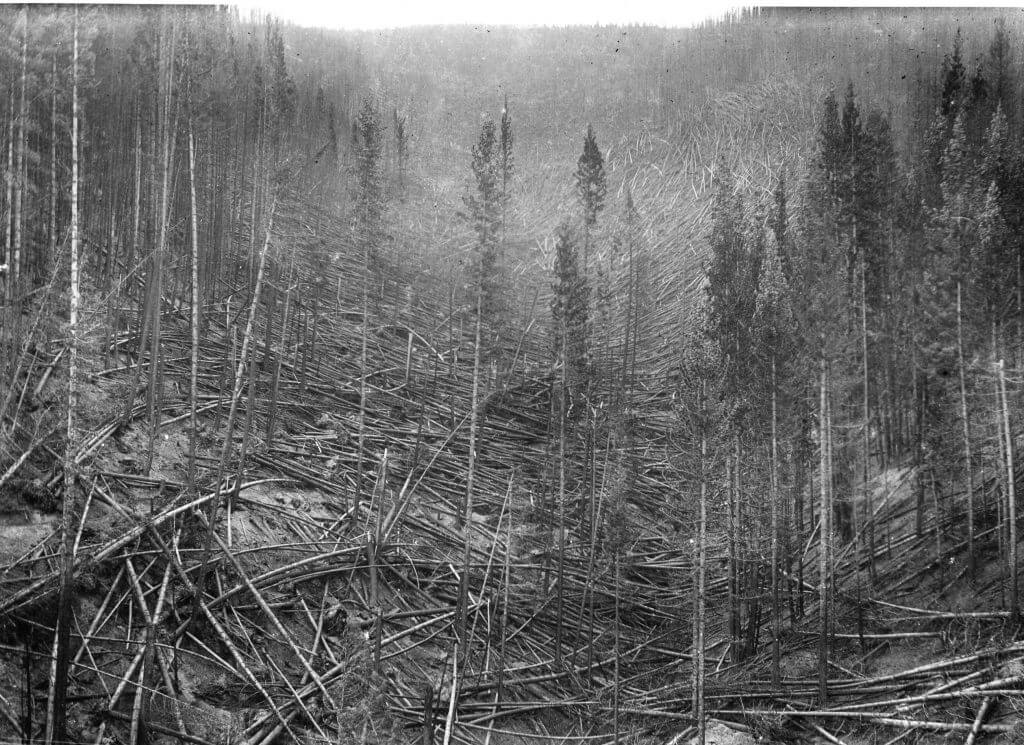Vegetation Evolves on Earth and with it Fire
Until the advent of vegetation wildfire didn’t exist. There was oxygen and elements that provided fuel but not actual vegetation. Hard to believe but there was a time without wildfire. Once vegetation existed wildfire helped plants to evolve. Plants in turn used fire to renew, replace and regenerate though co-evolution.
Great Lakes and US-Canada Border
Major conflagrations around the Great Lakes and along the US-Canada border.
Canadian Forest Service Loses Land Base
Canadian Forest Service loses land base and becomes a research organization
“Until 1930, the federal government retained authority over the forests of Manitoba, Saskatchewan and Alberta and the 64 km-wide railway belt along the route of the Canadian Pacific Railway in British Columbia. Today, provincial and territorial governments are responsible for about 90 per cent of the non-reserved commercial forest land, the federal government controls roughly 2 per cent (this includes First Nations reserves, military bases and national parks), and private owners oversee the remaining 8 per cent.”
Accessed September 24th 2019 https://www.thecanadianencyclopedia.ca/en/article/forestry
10 am Policy Adopted by US Forest Service
“In 1935, the Forest Service established the so-called 10 a.m. policy, which decreed that every fire should be suppressed by 10 a.m. the day following its initial report. Other federal land management agencies quickly followed suit and joined the campaign to eliminate fire from the landscape. Fire suppression efforts were aided by the development of new technologies, such as airplanes, smokejumpers, and fire suppression chemicals. With such tools, fires could be fought anywhere—and were.”
Accessed September 20th 2019 Forest History
Wildfire associated with the Axis WW II
During WWII the US Forest Service and other US Governmental Departments developed WWII propaganda posters likening wildfires to the Axis. These posters helped further demonize wildfire.
Smokey Bear first poster appearance
Militarization of Wildfire Fighting Post WWII
After WWII wildfire fighting was militarized. Command structures and surplus equipment from the war were adopted in North America. The “fighting fire” mentality was reinforced leading to a mindset of being able to “win the war” with fire.
Revolution in US Fire Policy to restore fire in the landscape













